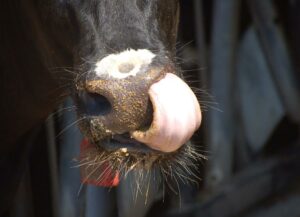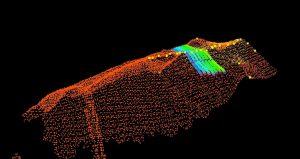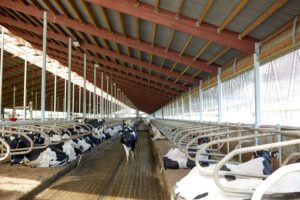Alvaro Garcia
Diet formulation for lactating dairy cows requires a thorough understanding of ruminant biology. Their unique digestive system makes them susceptible to disfunctions of the pre-stomachs when departing from their requirements. Successful nutritionist understand that they need to feed two interdependent systems, the host itself (the cow), and the microorganisms populating the rumen.
Supplying the reticulum and rumen with energy, nitrogen/protein, minerals and even vitamins, maximizes the growth of the microbial population and allows the fine-tuning of this symbiotic relationship. Different microbial groups within this population have specific needs and are specialized in their ability to degrade different substrates.
Folic acid and betaine activity on rumen microbiome and mammary gland
Recent studies for example have indicated that folic acid (FA) addition to the diet stimulated DNA synthesis in dairy cows and upregulated the gene expression related to protein synthesis in the mammary gland. Folic acid is reduced to tetrahydrofolate which is essential for the growth of Ruminococcus (R.) flavefaciens.
Dietary rumen-protected folic acid addition has increased cellulolytic bacteria population and the activity of its enzymes, α-amylase and protease. It has also had a positive effect on milk and milk protein yields. Betaine, the trimethyl derivative of glycine, arises from choline oxidation and is used in osmoregulation and transmethylation reactions.
Betaine donates a methyl group to regenerate methionine from homocysteine and is then converted to dimethylglycine. The methyl groups of the latter are split-off through oxidation and transferred to tetrahydrofolate to generate 5,10-methylene- tetrahydrofolate. Dietary betaine supplementation has been shown to increase intestinal microbes, digestive enzyme activities and nutrient digestibility in single-stomached animals and helped maintain the structure and activity of the mammary gland cells in dairy cows.
[ihc-hide-content ihc_mb_type=”show” ihc_mb_who=”3,4,5″ ihc_mb_template=”1″ ]Addition of betaine has increased ruminal total volatile fatty acids (VFA) concentration and total-tract nutrient digestibility. Moreover, an increased milk and milk fat yield with betaine addition was observed in goats and dairy cows. These results indicated that dietary betaine addition might have a stimulating effect on ruminal microbial growth and enzymatic activity in dairy cows.
A recent study (Cheng et al., 2020) looked at the methyl donor properties of betaine and folic acid role in transferring one-carbon units on lactation performance, nutrient digestion, and rumen fermentation in dairy cows. Holstein cows were assigned to four dairy treatments in a two-way factorial:
- 0 mg/kg of rumen-protected folic acid and 0 g/kg of betaine
- 0 mg/kg of rumen-protected folic acid and 4.0 g/kg of betaine
- 5.2 mg/kg of rumen-protected folic acid and 0 g/kg of betaine
- 5.2 mg/kg of rumen-protected folic acid plus 4.0 g/kg of betaine
Positive effects of protected folic acid and betaine to dairy cows
There were no differences in dry matter intake or body weight changes among treatments. The increase in yield of actual milk and fat-corrected milk observed were thus the result of higher total-tract nutrient digestibility and ruminal VFA concentrations, suggesting rumen protected folic acid addition increased nutrient utilization efficiency and increased feed efficiency.
Higher feed efficiency was observed for cows receiving rumen protected folic acid or betaine. Dietary rumen protected folic acid or betaine addition increased yields of milk and milk fat. Milk true protein yield increased only with rumen protected folic acid, which likely results from the upregulation of gene expression for hepatic protein synthesis and likely in the mammary gland as well.
Rumen protected folic acid or betaine increased feed efficiency, DM total-tract digestibility, organic matter, crude protein, neutral detergent fiber and acid detergent fiber. Rumen pH decreased with rumen protected folic acid addition but was unchanged with betaine addition.
Dietary rumen protected folic acid or betaine addition increased ruminal total VFA concentrations and shifting rumen fermentation to more acetate production. This was likely due to the increase in activity of carboxymethyl-cellulase, xylanase, and total bacteria, protozoa, R. albus and R. flavefaciens resulting in higher total-tract digestibility of NDF and ADF.
This positive impact of rumen protected folic acid on ruminal cellulolytic bacteria is likely a result of folic acid regulation on the transfer of methyl groups and regeneration of methionine. Rumen protected folic acid supplementation increased isovalerate molar proportion result of the higher protease activity and increased population of total protozoa and P. ruminicola, indicating protein degradation.
Concentration of acetate and butyrate in the rumen increased by 8.66 % and 10.5 % with betaine addition, providing more substrates for milk fatty acids synthesis. Dietary addition of betaine also provided available N and methyl groups for microbial growth.
The addition of rumen protected folic acid or betaine increased the activity of carboxymethyl-cellulase, xylanase and protease, and the population of total bacteria, protozoa, R. albus and R. flavefaciens. Prevotella ruminicola was higher with rumen protected folic acid but the activity of cellobiase, total fungi, and Ruminobacter amylophilus were higher with betaine supplementation.
How production performance of dairy cows improves with protected folic acid or betaine?
In summary the data of this experiment indicated that rumen protected folic acid or betaine improved lactation performance, nutrient digestion and rumen fermentation, and that betaine might increase folic acid utilization efficiency in dairy cows.
Higher milk fat yield is likely the result of more rumen acetate. Higher milk true protein yields agree with the positive response in total-tract protein digestibility as well as blood concentration of total protein and albumin, indicating that dietary N utilization efficiency increased with rumen protected folic acid addition.
Dietary addition of rumen protected folic acid or betaine increased milk yield. Fat corrected milk yield also increased by 9.71 %, 6.81 % and 18.4 % for rumen protected folic acid addition, betaine and the combined addition of rumen protected folic acid and betaine, respectively.
Reference:
Cheng, K.F., Wang, C., Zhang, G.W., Du, H.S., Wu, Z.Z., Liu, Q., … Pei, C.X. 2020. Effects of betaine and rumen-protected folic acid supplementation on lactation performance, nutrient digestion, rumen fermentation and blood metabolites in dairy cows. Animal Feed Science and Technology. 262: 114445.
© 2020 Dairy Knowledge Center. All Rights Reserved.









